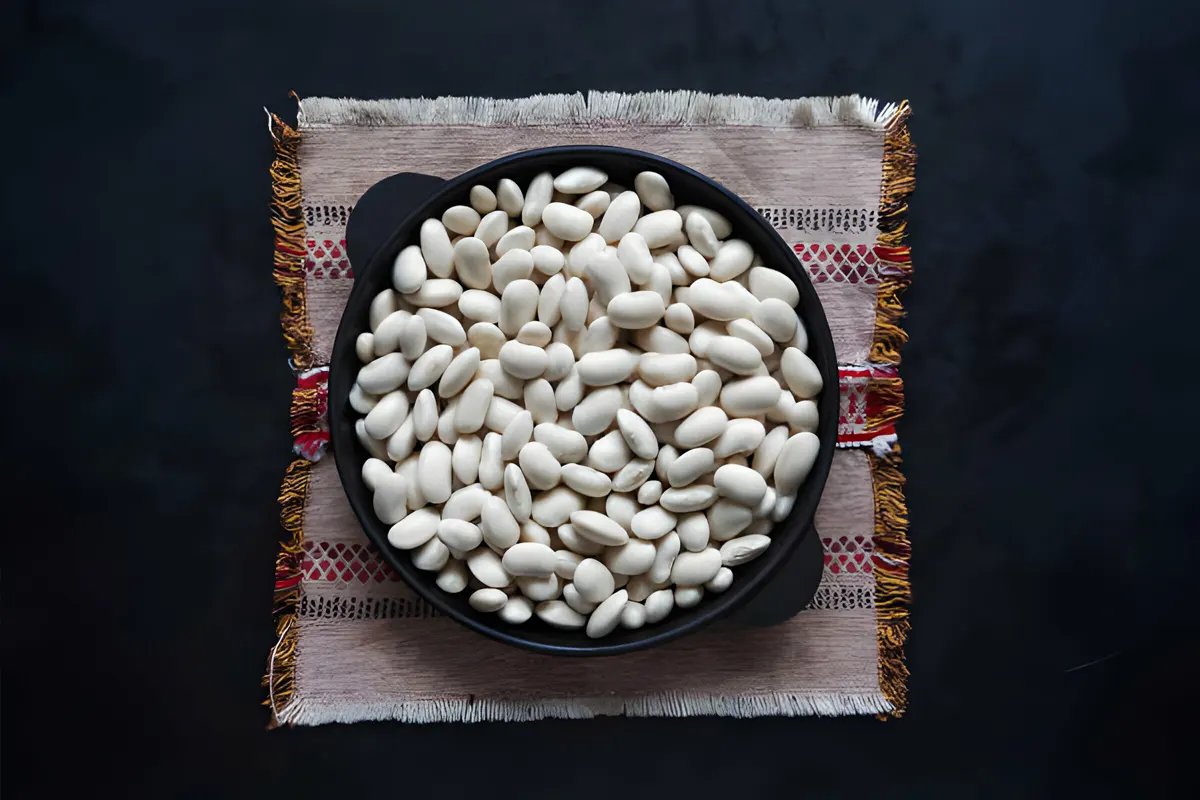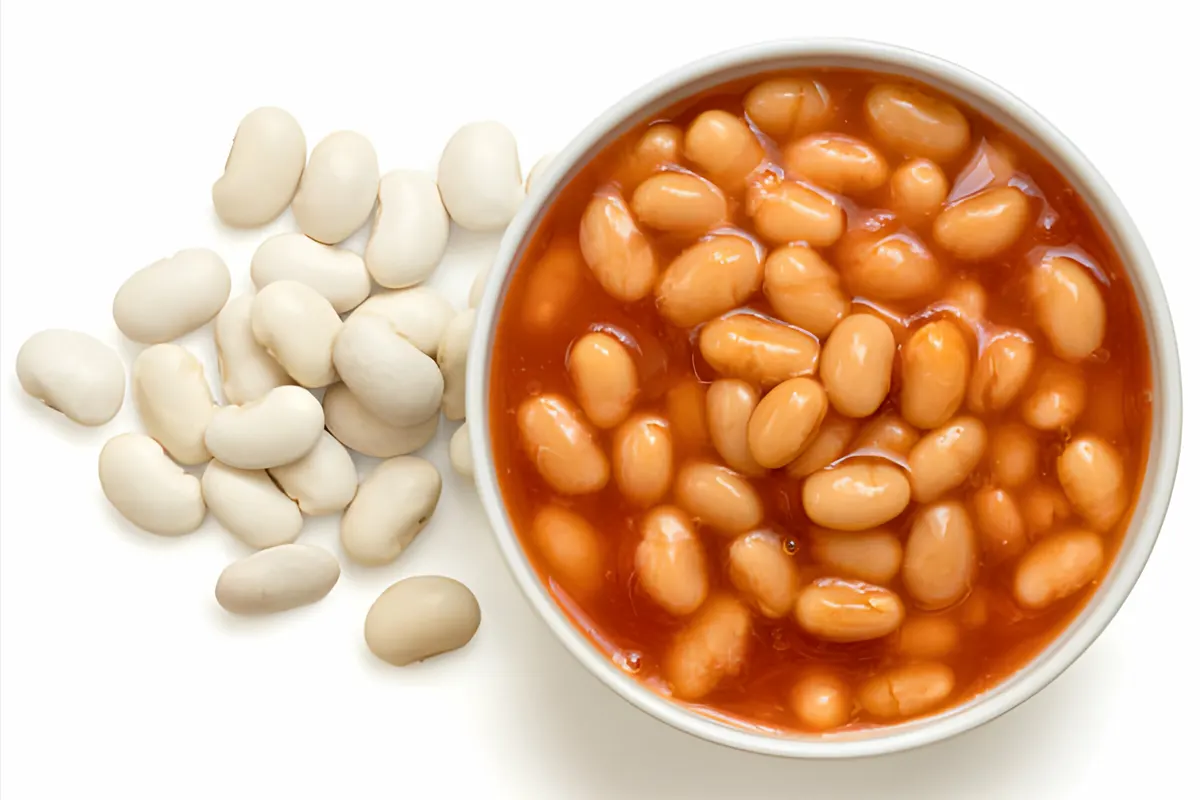Introduction to Navy Beans
Navy beans, also known as pea beans, are small, oval-shaped white beans that have been a staple in kitchens around the world for centuries. Their name comes from their historical use as a primary food source by the U.S. Navy. In this comprehensive guide, we’ll explore the many facets of navy beans, from their nutritional value to their culinary versatility.
Whether you’re a seasoned chef or someone looking to add a nutritious and budget-friendly ingredient to your diet, navy beans have something to offer. Join us as we dive into the world of these tiny legumes.
Nutritional Value of Navy Beans
Navy beans are packed with essential nutrients, making them a valuable addition to any diet. Let’s take a closer look at their nutritional profile:
Macronutrients and Micronutrients
- Navy beans are rich in protein, fiber, and complex carbohydrates, making them a great source of sustained energy.
- They contain essential minerals like iron, magnesium, and potassium, which support various bodily functions.
- Navy beans are also a source of B vitamins, particularly folate, which is important for cell division and a healthy pregnancy.
Health Benefits
- Their high fiber content aids in digestive health, promoting regular bowel movements.
- The low glycemic index of navy bean helps regulate blood sugar levels, making them suitable for diabetics.
- They are heart-healthy due to their low fat content and ability to lower cholesterol levels.
Culinary Uses of Navy Beans
Navy beans’ versatility in the kitchen knows no bounds. They can be incorporated into various dishes, both traditional and modern. Here are some of the culinary wonders you can achieve with navy beans:
Popular Dishes and Recipes
- Navy Bean Soup: Explore our recipe for Navy Bean Soup for a hearty and comforting meal.
- Baked Beans: Learn how to make classic Baked Beans with navy beans, a favorite side dish for barbecues and picnics.
- Hummus Alternative: Swap chickpeas for navy beans in your homemade hummus for a creamy and nutritious alternative.
Cooking and Preparation Tips
- Discover the secret to perfectly cooked navy bean in our article on Bread Recipe for Special Events. Proper preparation and cooking techniques are essential for achieving the ideal texture and flavor.
In the following section, we’ll delve into the various types and varieties of navy beans.
Types and Varieties of Navy Beans

Navy beans may be the most well-known, but there’s more to this family of legumes. Let’s explore the different types and their unique characteristics:
- Standard Navy Beans: These are the traditional white beans known for their mild flavor and smooth texture, making them ideal for soups and stews.
- Small White Navy Beans: Slightly smaller than the standard variety, they cook quickly and are often used in recipes requiring shorter cooking times.
- Great Northern Beans: Similar in appearance to navy beans, they have a nutty flavor and hold their shape well, making them suitable for salads and casseroles.
- Cannellini Beans: Larger and creamier in texture, cannellini beans are a popular choice for Italian dishes like minestrone soup and pasta salads.
For a delightful culinary adventure with navy beans, consider trying our Pastina Recipe – A Culinary Delight, where beans play a starring role alongside other delectable ingredients.
Growing and Harvesting Navy Beans
Growing navy beans is a rewarding endeavor, whether you have a spacious garden or a small balcony. Here’s what you need to know about planting, cultivating, and harvesting these nutritious legumes:
Planting and Cultivation
- Navy beans thrive in well-drained soil with good sunlight. Prepare the soil by adding compost or organic matter to enhance its fertility.
- Plant navy bean seeds about 1 to 1.5 inches deep and 2 to 4 inches apart. Ensure proper spacing to allow for healthy growth.
- Water the beans consistently but avoid overwatering, as they don’t tolerate soggy conditions.
- As they grow, consider providing support for the plants to prevent them from sprawling.
Harvesting and Storage
- Navy beans are ready for harvest when the pods are dry and brittle. Harvest them before the pods split open to prevent seed loss.
- Remove the beans from the pods and allow them to air dry further for a few days.
- Store the dried navy beans in an airtight container in a cool, dark place to maintain their quality.
In the next section, we’ll explore how navy beans are used in traditional cuisines around the world.
Navy Beans in Traditional Cuisines
Navy beans have made their way into the culinary traditions of various cultures. Their versatility and nutritional value have earned them a place on dinner tables worldwide:
North America
- In the United States, navy bean are the star of the classic dish, Boston Baked Beans. Slow-cooked with molasses and spices, they offer a sweet and savory flavor.
Italy
- Italians use navy beans in dishes like Pasta e Fagioli, a hearty pasta and bean soup, and Tuscan-style white bean salads.
Brazil
- Feijoada, Brazil’s national dish, features beans cooked with pork and served with rice. It’s a rich and flavorful meal.
India
- In Indian cuisine, navy beans are used in dishes like Rajma, a spiced kidney bean curry, and as a filling for parathas (stuffed flatbreads).
Navy beans’ adaptability allows them to seamlessly integrate into various culinary traditions, offering a nutritious and affordable source of protein.
In the next sections, we’ll delve into health considerations, sustainability, and delicious recipes using beans.
Health Considerations and Precautions
Navy beans are not only delicious but also nutritious. However, it’s important to be aware of potential allergies and side effects associated with these legumes:
Potential Allergies
- Some individuals may have allergies to legumes, including navy bean. Symptoms can include digestive discomfort, skin rashes, or respiratory issues. If you suspect an allergy, consult a healthcare professional.
Digestive Effects
- Navy beans contain complex carbohydrates and dietary fiber, which can lead to gas and bloating in some people. Gradually introducing them into your diet can help reduce digestive discomfort.
Dietary Recommendations
- Navy beans are an excellent source of plant-based protein and are suitable for vegetarian and vegan diets.
- Including navy beans in your diet can promote heart health, help manage blood sugar levels, and support digestive regularity.
In the following section, we’ll explore the eco-friendly aspects of beans and their role in sustainable eating.
Navy Beans in a Sustainable Diet
As interest in sustainable eating grows, navy beans have garnered attention for their eco-friendly characteristics:
Low Environmental Impact
- Navy beans require relatively low amounts of water and resources to cultivate compared to some other crops, making them an environmentally responsible choice.
Plant-Based Protein
- Choosing navy beans as a protein source reduces the environmental footprint associated with meat production. They are a key player in plant-based diets.
Versatile Ingredient
- Navy beans’ versatility allows for creative and sustainable meal planning. They can replace or complement meat in various recipes.
Cooking Navy Beans: Recipes and Techniques
Navy beans are a culinary treasure that can be incorporated into a wide range of dishes. Whether you’re a seasoned chef or a home cook, here’s a guide to cooking navy beans to perfection:
Step-by-Step Cooking Guide
- Preparation: Start by rinsing the navy beans under cold water to remove any dust or debris. If you have time, soak them overnight to reduce cooking time and improve digestibility.
- Cooking Methods: Navy beans can be cooked on the stovetop, in a slow cooker, or using an Instant Pot for convenience. Choose your preferred method based on your schedule.
- Seasoning: Experiment with different seasonings such as bay leaves, thyme, garlic, and onions to infuse flavor into your beans.
- Cooking Time: Simmer the beans until they are tender but not mushy. This typically takes about 45 minutes to 1 hour, but it may vary depending on the cooking method and bean type.
Recipe Ideas and Variations
- Classic Navy Bean Soup: Create a comforting navy bean soup with vegetables and a hint of smokiness from ham or bacon.
- Navy Bean Salad: Toss cooked navy beans with fresh herbs, tomatoes, and a zesty vinaigrette for a refreshing salad.
- Navy Bean Dip: Blend navy beans with tahini, lemon juice, and spices to make a creamy and nutritious dip.
- Navy Bean Casserole: Combine beans with ground meat, tomatoes, and cheese for a hearty casserole dish.
Now that you have the knowledge and techniques to cook beans, you can explore a world of culinary possibilities.
In the final section, we’ll summarize the key takeaways and the value of navy beans in your kitchen.
Conclusion
In this comprehensive guide, we’ve embarked on a journey through the world of navy beans. From their nutritional value to their diverse culinary uses, navy beans have proven to be a versatile and nutritious addition to any kitchen.
Whether you’re savoring a warm bowl of navy bean soup on a chilly day or enjoying a fresh bean salad in the summer, these legumes offer endless culinary possibilities. They are not only delicious but also environmentally responsible, making them a valuable ingredient in sustainable eating.
As you explore the recipes and cooking techniques provided, you’ll discover that beans can be a canvas for your culinary creativity. So, embrace the versatility of navy beans and elevate your meals with their wholesome goodness.
Incorporate navy beans into your diet, experiment with recipes, and savor the flavors they bring to your table. From classic dishes to innovative creations, navy beans are here to enrich your culinary journey.
Frequently Asked Questions (FAQ)
Q1: What are navy beans, and why are they called ‘navy’ beans?
- A1: Navy beans, also known as pea beans, are small, oval-shaped white beans. They earned their name due to their historical use as a primary food source by the U.S. Navy during the 19th century.
Q2: Are navy beans and great northern beans the same thing?
- A2: While both navy beans and great northern beans belong to the same family, they have slight differences in size and texture. Great northern beans are slightly larger and have a nuttier flavor.
Q3: Are navy beans gluten-free?
- A3: Yes, navy beans are naturally gluten-free, making them a safe choice for individuals with gluten sensitivities or celiac disease.
Q4: How can I reduce gas when consuming navy beans?
- A4: To reduce gas production, soak navy beans before cooking, discard the soaking water, and cook them thoroughly. Gradually introduce them into your diet to allow your digestive system to adapt.
Q5: Can I freeze cooked navy beans?
- A5: Yes, you can freeze cooked navy beans for future use. Allow them to cool, package them in airtight containers, and store them in the freezer. They can be a convenient addition to future recipes.
Q6: Are there any potential health benefits of consuming navy beans?
- A6: Yes, navy beans are rich in fiber, protein, and various nutrients. They may promote heart health, aid in blood sugar management, and support digestive regularity.
Q7: How can I incorporate navy beans into a vegetarian or vegan diet?
- A7: Navy beans are an excellent source of plant-based protein. Use them in place of meat in dishes like chili, stews, and soups. They also make a delicious base for vegetarian burgers.
Q8: What is the shelf life of dried navy beans, and how should they be stored?
- A8: Dried navy beans have a long shelf life if stored properly. Keep them in an airtight container in a cool, dark place, and they can last for up to two years or more.

